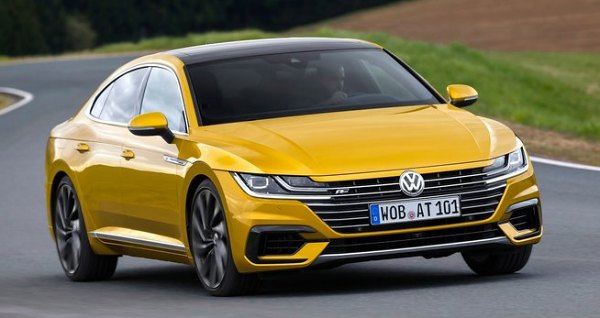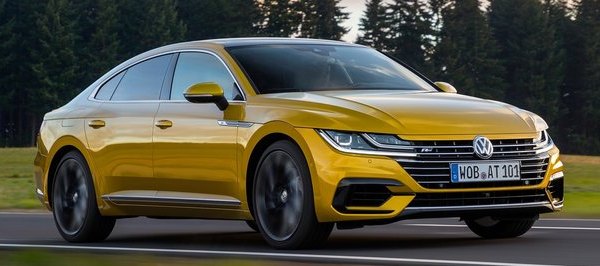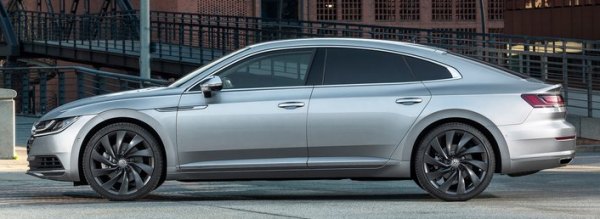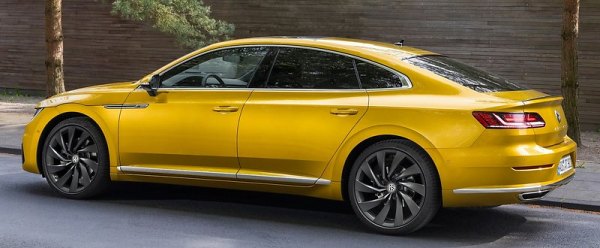Published
on 7
Jun 2017
|
All rights reserved.
|
|
|

|
|
It
is set to be the most upmarket Volkswagen this side of the next
generation Phaeton. |
|
“4-door coupe” is a market
segment German manufacturers trying very hard to explore. However, to
make a successful 4-door coupe is difficult. The first Mercedes CLS
managed that, ditto the current CLA and Audi A5 Sportback. Less so the
BMW 4 and 6-Series Gran Coupe and Audi A7. The least successful is
probably the outgoing Volkswagen Passat CC, which was a rare sight on
street. The key to success is to differentiate the car from its sedan
sibling. Since 4-door coupes are priced higher than the mass-production
sedans on which they are derived and offer less practicality as well,
they have to be styled far sexier to arouse your desire. Unfortunately,
due to their mechanical constraints and the need to preserve reasonable
rear-seat space means very few designers could manage the mission
impossible. That was exactly the problem of Passat CC – it looked too
dull and conservative to win hearts. It would be remembered as the less
practical Passat rather than a more beautiful Passat. In its final
years, Volkswagen tried to cut its tie with Passat by renaming it
simply CC, but smart buyers were unmoved. Set 1 finished. 0-6.
However, Wolfsburg gives it a second chance. In the second incarnation,
more emphasis was placed on styling. It was described by its designer
as “the sexiest Volkswagen ever”, although that title means little to
us. Moreover, more differentiation from the Passat is implemented by
utilizing the flexibility of MQB platform, stretching the car's length,
width and wheelbase to give it more space and a more upmarket feel. As
a result, Volkswagen calls it a premium car and changes its name to
Arteon. It is set to be the most upmarket Volkswagen this side of the
next generation, electrified Phaeton. Big promise, but does it deliver?

|
|
It
was described by its designer as “the sexiest Volkswagen ever”...
|
|
Yes, the new Arteon might be the sexiest Volkswagen ever. Problem is,
no one would describe a Volkswagen as sexy. Even a classic like the
1955 Karmann Ghia (designed by
Italian) was rarely associated with this word. Before the introduction
of Golf, VW meant cute. After that, it means boxy. More recently, its
styling theme has added a stronger sense of sharpness,
but when you talk about sexy, you mean curves, and this is exactly what
Volkswagen lacks. The Arteon is no exception. Its sheet metal primarily
consists of straight lines. There is no coke-bottle waist line,
sculpted fenders or curvy bonnet. Its flat bonnet and the horizontal
treatment of front grille and headlamps emphasizes the car’s 1871mm
width rather than a sleek proportion. The shape of its fastback and the
side windows are ordinary, without any drama or character to speak of.
Unlike the first CLS, its roof line is quite flat, thus the coupe
effect is subtle. Maybe they know it is not sexy enough, the launch car
was painted gold to catch eyes. Change to silver, and it looks more
like a typical Volkswagen.

|
|
Its roof line
is quite flat, thus the coupe effect is subtle.
|
|
As said, the Arteon is larger than Passat in all dimensions but height,
which is just 6mm lower. It is nearly 100mm longer, 40mm wider and 46mm
longer in wheelbase. However, compared with a Skoda Superb, all these
dimensions deviate by merely a single-digit millimeter. This implies
that both cars have ready reached the upper limit of the MQB platform,
which is quite a notable achievement for something underpinning Golf.
It is also notably larger than Audi A5 Sportback or BMW 4-Series Gran
Coupe. In addition to the FF architecture, no wonder the Arteon
offers class-leading interior space. In particular, the rear seat
offers plenty of legroom, while headroom is compromised just a tiny
bit by the fastback roofline. At the back, the boot is also
class-leading at 563 liters.
The dashboard is basically the same as that of Passat, which is no bad
thing in terms of perceived quality, but failing to give it a sportier
or more premium image. As in its sedan sibling, the design is civilized
and minimalist. There is a new, larger infotainment touchscreen which
does away rotary knobs, but it
will be offered in Passat and Golf as well soon. You sit lower in the
car than in the Passat, and the side windows are shallower, so the
ambience is not as airy.

|
|
Class-leading
interior space matches VW-typical quality.
|
|
Predictably, all of the engines are carried over from the Passat and
Superb. These include the 150hp 1.5TSI Evo, 190hp 2.0TSI, 280hp 2.0TSI
and a trio of 2.0TDI with 150hp, 190hp or 240hp – the latter employs
sequential twin-turbo. They are coupled to 7-speed DSG twin-clutch
gearbox. Some markets will be offered with only the top 280hp petrol
and 240hp diesel engines, and they are attached to 4motion system to
handle the extra torque. Naturally, the diesel is the choice for
long distance cruising, while the petrol’s wider power band is more fun
to access, and its 0-60 mph time of 5.3 seconds is already in the
league of the last generation Passat R36. That said, while the
four-cylinder turbo is refined, it lacks the beautiful sound and extra
punch of a V6. Volkswagen guys recently acknowledged that a new V6
turbo could be added soon. Will it be the transverse version of
Audi/Porsche V6? Or a turbocharged version of the old VR6? Hopefully we
shall know later. Before that happens, the Arteon is not going to
challenge the more powerful models of 4-Series GC and A5 Sportback.
Well, I suspect even when it is given the V6, it is not going to be a
driver’s car. The MQB platform has a conventional FF layout, of course,
so its weight is biased towards the nose. The 4motion system sends
power to the rear wheels only when the front wheels run out of
traction. These mean while the Arteon has good roadholding, it is not
agile or tightly controlled enough to threaten BMW, or to lesser extent
Audi. Understeer happens more readily. In fact, the Arteon is not tuned
to be too sporty either. Most of its controls are light and easy to
operate. The variable-ratio electric power steering is accurate enough
but too light and short of feel. Switch to Sport mode adds a little bit
weight but no
more connection to the road.
 |
|
Another misstep
taken by the group.
|
|
What it excels is cruising on highway, where it is smooth and quiet.
The car rides on 245/40R19 tires as standard or 245/35R20 as option.
Thanks to bespoke dampers and bushings, the ride quality on 20-inch
wheels isn’t as harsh as you might expect. However, on B-roads the
story is different. Even the softest suspension setting might struggle
to contain the bumps, potholes or sharp ridges. Sport mode is useable
only on the smoothest highway. An Individual mode allows you to set the
stiffness in between, but for most roads the softest setting works best.
Volkswagen needs a fresh and successful new product to recover from the
damage of “Dieselgate”. Unfortunately, Arteon is not that car. It seems
to be another misstep taken by the group. The market segment of 4-door
coupe is relatively small and hardly growing. Is it wise to pour money
into the segment instead of the fast-growing SUV-crossover or EV? If it
is a premium brand, it might make sense. Since Volkswagen is never
associated with a sporty image, the chance of success is very slim,
unless China like it.
|
Verdict:    |
|